We made our way onwards to Colonia, a small town by the side of the river plate which has recently been given Unesco World Heritage status. Partway through the bus journey we encountered, once again, a scottish couple that we met some days ago who are following a similar route to ours. However, they have a boat in a very small town nearby that they sailed here over a period of eight years. In their words, the boat is now in a bit of a state and needs some concentrated re fettling before they can sail it back again. However, they are not living here but make frequent journeys back and forth. They are going to spend Christmas at home for the first time for 8 years while we are now beginning to contemplate the very strange notion of being so far away from family and friends!
The sun grew stronger during the day and by the time we reached Colonia it was shining brightly. It's amazing how much better anywhere looks when the sun is shining! Although Colonia is only the same size as Fray Bentos, the constant stream of visitors, particularly through the port (direct access to BsAs) means that the infrastructure is much stronger. Everywhere there are cafes, bars and small hotels (sadly with incredibly inflated prices!) The roads buzz with the motorcycle engines of small 2 and 4 seater buggies that are rented out to tourists. Some of these look rather sporty, low slung with retro racing car looks but a few observations showed that they have hopelessly underpowered engines and would give more frustration than fun! We decided to walk, our usual mode of transport around towns.
The early Colony of Sacramento (hence Colonia) was fought over and traded over time, particularly by the Spanish and Portuguese (although the English had a bit of a look-in too!) The big square was originally a parade ground for the soldiers defending the town. The whole encampment was surrounded by walls of which only a gatehouse and a small section remains, although even this shows a lot of renovation – some might say complete rebuilding. The old part of town has lots of single storey small houses from the earliest period, constructed from rough stonework and standing on crudely paved roads.
However, the continued use of the town meant that some of these were also extended upwards and backwards to form more substantial places befitting the 'ímportant’ traders and dignitaries living there. Some ‘new’ houses were also built although for some reason the ruins of the convent remained untouched and now form the base of the lighthouse. We climbed up the steel staircase to get a good view of the town but forgot to count the number of steps.
Colonia has a number of museums and a useful system for admittance. You buy a combined ticket for UR$50 (about GBP1.60) that lets you into all the museums. They all have the same opening times so you’re not left trying to plan a complex logistics problem like some other towns. Unfortunately all logic went at that point as all the museums have a different day when they are closed! And the Museum of Spanish Settlement is seemingly permanently closed (at the the time our Lonely Planet was published is supposed to be closed for renovations, must be a big job. When we walked past we could see no sign of activity at all).
This information was carefully written all over our map by the lady at the first museum (who had obviously taken lessons from Thai people on how to treat other people’s maps).
When you get into the museums thay are very small and sometimes a bit pointless. Some of the actual buildings are interesting but the contents are often the mish-mash of donated stuff that doesn’t really give any clear message I’m sure the town would like to give. One had some furniture and tablewear from the period but it was all replica. A few show noticably third world standards of safety etc and almost all have lots of staff with very little to do.
The exception to this was the archive museum, where a sole woman held fort, almost literally as the lights were out and the huge doors soundly closed to discourage visitors. She was plainly put out that we had dared to venture into her private world and start looking at things. Luckily for her there is very little in her museum, so visitors can rarely trouble her for long.
There has obviously been some recent rearrangements of some museum exhibits. Our trusty Lonely Planet suggested that we would see a whale skeleton in one museum but it was not immediately apparent. Let's face it, a whale skeleton should be pretty obvious since nowhere did it intimate that it might be a miniature whale or anything like that. We were obviously disappointed but learned to live with this bitter pain.
However, the next day we were wandering a back street and found the skeleton under a corrugated iron shelter in a little park with a couple of concrete prehistoric animals! Colonia Council, ever keen to promote their town, have created a little walled park in what maps showed as just empty space but they have put gates on it to keep tourists out. All we were able to do was to peer through the bars to see the skeleton!
There is also a lot of overlap between their collections, we saw several exhibitions of stone balls made by indigenous peoples of the area. Interesting to a point but when you’re onto your seventh glass case of these things and you still can’t see the differences between them, you know you’ve seen too many stone balls. (Aplogies to any of our readers who are intensely interested in the development of tools used by indigenous peoples of South America. Perhaps you’d like to give some pointers of what to look for because we have the sneaky feeling that we may see more of these before our trip is over!)
You're not allowed to take photo's in any of the museums but we sneaked you a few shots. The risks we take to keep you informed!
The delight in Colonia is really just to wander and enjoy glimpses into other ages. At every corner there are interesting buildings at different stages of development, decay and renovation. There are lots of quirky bits of architecture and details like tiles and inscriptions to be spotted and plenty of calm places to take the weight of the feet and enjoy a coffee or something stronger. The steady stream of tourists does clog up some of the cafes close to the waterside. However, most of the town has only sprinklings of wandering visitors and frankly one has doubts whether some of the cafes can make a decent living.
We had a long chat with Kristina, the owner of a beautiful gallery/cafe called 1717, who felt that summer and weekends are better for her but lamented that winter is completely dead.
We visited a couple of bars with music and our final evening we hoped to attend the Luz y Sonido at the old church. However there was a complete lack of Luz when we were there and no other people either so we guessed that it had been called off because of the doubtful weather (it had rained all day but was actually dry in the evening).
We ate in The Drugstore, a lively (by Colonia standards) bar with walls covered with posters, an open kitchen with two disinterested chefs and a unique dining nook outside the bar housed in an old car. You can be served your food and drinks at a rickety table inside the car although one of you must suffer the indignity of sitting on one of those accursed beanbag things that are supposed to be young lively and informal but nobody ever points out are extremely uncomfortable.
(Now we are mostly staying in hostels we are seeing more and more of these things and TP, for one, is not best pleased). Anyway, the chilly and damp air meant that we ate inside and were regaled at intervals by a crooner who wanted to banter with his audience. Our spanish does not yet include banter and he was lucky that TP looked up when he did otherwise we wouldn’t have even known that we were being spoken to!
However, the food here was great because they actually cooked us some vegetables. You cannot believe how excited we both were to have some boiled potato, pumpkin, carrots and peas on our plates.
The South American diet largely rejects anything that is not meat and most people simply discard even the limited salad garnish that fills the corner of the vast platters of charred flesh that are served. Those salad dodgers amongst you would love it! Our alternative has primarily been weeks of pizzas and pastas. Even when we’ve had salads, most have been variations of tinned vegetables with some lettuce and not very inspiring. We had just reached the point at which we both said ‘I have had enough cheese and starch! I need real vegetables!’ It all came to a head on Thursday when Jen ordered trout, the only thing on the menu that included some vegetables, and was told ‘sorry we have no trout today‘. So she asked whether they could do a different fish with the vegetables and was told, ‘no, we have no trout so we have no vegetables!’ How can a restaurant not have any vegetables? In The Drugstore we had a big plate full of fresh vegetables along with some grilled pieces of fish and an equally big plate of lovely fresh salad to go with it.
Colonia; every house a museum?
Saturday, November 28, 2009
 Colonia del Sacramento, Uruguay
Colonia del Sacramento, Uruguay
Other Entries
-
39Kinka Beach to 1770; that's a place, not a number!
Sep 2564 days prior 1770, Australiaphoto_camera48videocam 0comment 5
1770, Australiaphoto_camera48videocam 0comment 5 -
401770 to Rainbow Beach (but no pot of gold!)
Sep 2663 days prior Rainbow Beach, Australiaphoto_camera33videocam 0comment 0
Rainbow Beach, Australiaphoto_camera33videocam 0comment 0 -
41Beaches Wars! From Rainbow to Dicky!
Sep 2960 days prior Dicky Beach, Australiaphoto_camera23videocam 0comment 0
Dicky Beach, Australiaphoto_camera23videocam 0comment 0 -
42Dicky Beach to Brisbane: we made it!
Sep 3059 days prior Deagon, Brisbane, Australiaphoto_camera6videocam 0comment 2
Deagon, Brisbane, Australiaphoto_camera6videocam 0comment 2 -
43Brisbane: revisited and departed
Oct 1742 days prior Deagon, Brisbane, Australiaphoto_camera79videocam 1comment 6
Deagon, Brisbane, Australiaphoto_camera79videocam 1comment 6 -
44Buenos Aires: faded elegance
Oct 2831 days prior Buenos Aires, Argentinaphoto_camera32videocam 0comment 4
Buenos Aires, Argentinaphoto_camera32videocam 0comment 4 -
45Out and about in Buenos Aires
Nov 0127 days prior Buenos Aires, Argentinaphoto_camera66videocam 1comment 6
Buenos Aires, Argentinaphoto_camera66videocam 1comment 6 -
46Carlinhos Brown in Buenos Aires
Nov 0226 days prior Buenos Aires, Argentinaphoto_camera5videocam 0comment 1
Buenos Aires, Argentinaphoto_camera5videocam 0comment 1 -
47Rainy Days in Buenos Aires
Nov 0325 days prior Buenos Aires, Argentinaphoto_camera12videocam 0comment 0
Buenos Aires, Argentinaphoto_camera12videocam 0comment 0 -
48La Boca: Colour, life and tourist tat
Nov 0523 days prior Buenos Aires, Argentinaphoto_camera45videocam 0comment 0
Buenos Aires, Argentinaphoto_camera45videocam 0comment 0 -
49Madness, music and Las Madres
Nov 0622 days prior Buenos Aires, Argentinaphoto_camera19videocam 0comment 0
Buenos Aires, Argentinaphoto_camera19videocam 0comment 0 -
50Buenos Aires cafes and bars
Nov 0820 days prior Buenos Aires, Argentinaphoto_camera27videocam 0comment 4
Buenos Aires, Argentinaphoto_camera27videocam 0comment 4 -
51A very wet day in San Antonio de Areco
Nov 1315 days prior San Antonio de Areco, Argentinaphoto_camera36videocam 1comment 3
San Antonio de Areco, Argentinaphoto_camera36videocam 1comment 3 -
52Final days in Buenos Aires
Nov 1810 days prior Buenos Aires, Argentinaphoto_camera90videocam 0comment 4
Buenos Aires, Argentinaphoto_camera90videocam 0comment 4 -
53Montevideo - it's not yet changed to Monte-DVD!
Nov 208 days prior Montevideo, Uruguayphoto_camera59videocam 0comment 5
Montevideo, Uruguayphoto_camera59videocam 0comment 5 -
54Salto; hot springs, wet rain
Nov 235 days prior Salto, Uruguayphoto_camera49videocam 0comment 4
Salto, Uruguayphoto_camera49videocam 0comment 4 -
55Fray Bentos; that sounds familiar!
Nov 253 days prior Fray Bentos, Uruguayphoto_camera48videocam 0comment 0
Fray Bentos, Uruguayphoto_camera48videocam 0comment 0 -
56Colonia; every house a museum?
Nov 28 Colonia del Sacramento, Uruguayphoto_camera46videocam 0comment 6
Colonia del Sacramento, Uruguayphoto_camera46videocam 0comment 6 -
57Buenos Aires - Slight Return
Nov 302 days later Buenos Aires, Argentinaphoto_camera33videocam 3comment 4
Buenos Aires, Argentinaphoto_camera33videocam 3comment 4 -
58Hot News! Uruguay election results!
Dec 013 days later Buenos Aires, Argentinaphoto_camera1videocam 0comment 0
Buenos Aires, Argentinaphoto_camera1videocam 0comment 0 -
59What makes Rosario such a good place to live?
Dec 035 days later Rosario, Argentinaphoto_camera60videocam 0comment 8
Rosario, Argentinaphoto_camera60videocam 0comment 8 -
60Mercedes; final resting place of Gauchito Gil
Dec 068 days later Mercedes, Argentinaphoto_camera33videocam 1comment 0
Mercedes, Argentinaphoto_camera33videocam 1comment 0 -
61Pellegrini; floating islands, crocs and big rats!
Dec 0810 days later Colonia Carlos Pellegrini, Argentinaphoto_camera73videocam 0comment 2
Colonia Carlos Pellegrini, Argentinaphoto_camera73videocam 0comment 2 -
62Your mission, if you choose to accept it...
Dec 1113 days later San Ignacio, Argentinaphoto_camera37videocam 1comment 1
San Ignacio, Argentinaphoto_camera37videocam 1comment 1 -
63Iguazu falls: so that's where all the rain went!
Dec 1517 days later Puerto Iguazú, Argentinaphoto_camera47videocam 2comment 1
Puerto Iguazú, Argentinaphoto_camera47videocam 2comment 1 -
64Out of Iguazu with a bang; on to Ciudad del Este
Dec 1618 days later Ciudad del Este, Paraguayphoto_camera10videocam 0comment 1
Ciudad del Este, Paraguayphoto_camera10videocam 0comment 1 -
65Encarnación - and we manage to see Jesús!
Dec 1820 days later Encarnación, Paraguayphoto_camera55videocam 0comment 2
Encarnación, Paraguayphoto_camera55videocam 0comment 2 -
66Asunción; we're travellers, get us out of here!
Dec 2022 days later Asuncion, Paraguayphoto_camera11videocam 0comment 2
Asuncion, Paraguayphoto_camera11videocam 0comment 2 -
67Xmas greetings!
Dec 2123 days later Resistencia, Argentinaphoto_camera1videocam 0comment 7
Resistencia, Argentinaphoto_camera1videocam 0comment 7 -
68Resistencia: city of sculpture
Dec 2224 days later Resistencia, Argentinaphoto_camera41videocam 0comment 0
Resistencia, Argentinaphoto_camera41videocam 0comment 0 -
69Our 'current' location
Dec 2325 days later Corrientes, Argentinaphoto_camera24videocam 0comment 1
Corrientes, Argentinaphoto_camera24videocam 0comment 1 -
70Salta: our first sight of the Andes and our Xmas!
Dec 2527 days later Salta, Argentinaphoto_camera35videocam 3comment 3
Salta, Argentinaphoto_camera35videocam 3comment 3 -
71Multicoloured mountains and angels with guns!
Dec 2729 days later Humahuaca, Argentinaphoto_camera53videocam 0comment 1
Humahuaca, Argentinaphoto_camera53videocam 0comment 1 -
72Following the Train To The Clouds
Dec 2931 days later San Antonio de los Cobres, Argentinaphoto_camera81videocam 0comment 0
San Antonio de los Cobres, Argentinaphoto_camera81videocam 0comment 0 -
73Cafayate; days of wine, icecream and waterways
Jan 0235 days later Cafayate, Argentinaphoto_camera42videocam 0comment 3
Cafayate, Argentinaphoto_camera42videocam 0comment 3 -
74Tucumán; chilling out and getting heated!
Jan 0538 days later San Miguel de Tucumán, Argentinaphoto_camera26videocam 0comment 1
San Miguel de Tucumán, Argentinaphoto_camera26videocam 0comment 1

 Colonia del Sacramento, Uruguay
Colonia del Sacramento, Uruguay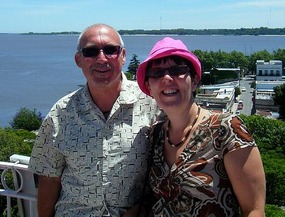


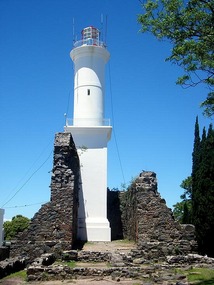
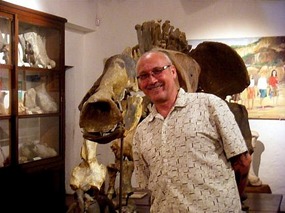
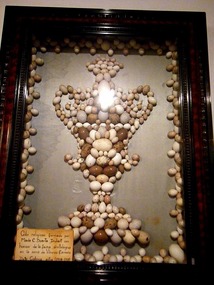
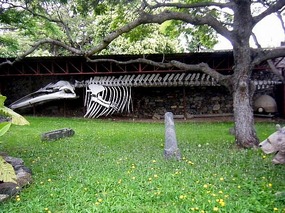
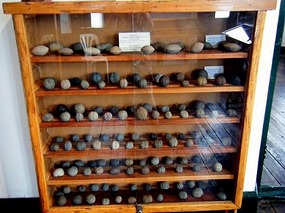
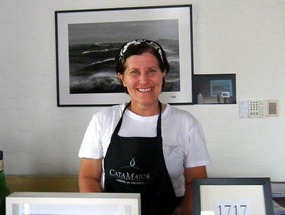
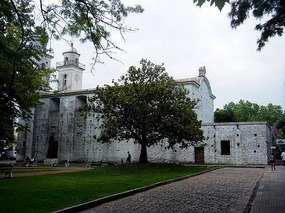
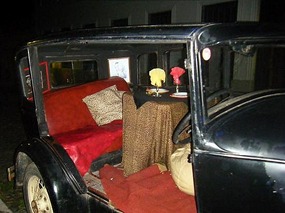
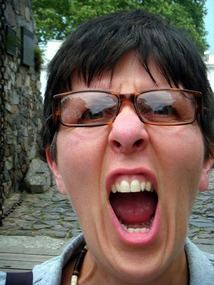






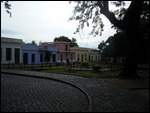
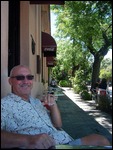

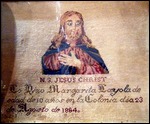
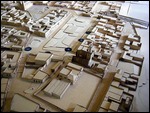

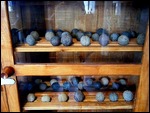
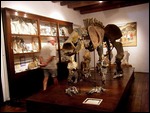
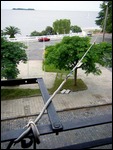
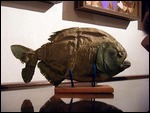
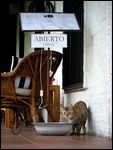
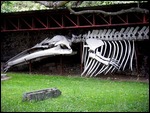
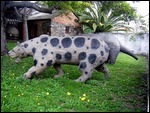
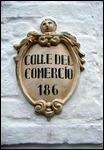
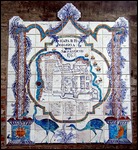
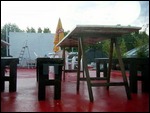
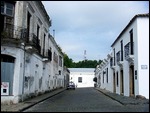
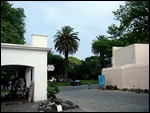
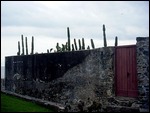
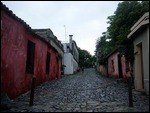
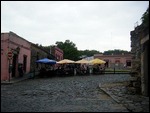
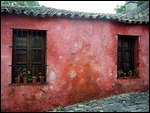


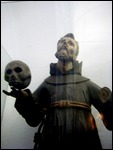
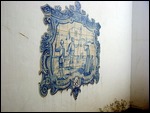
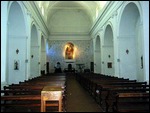
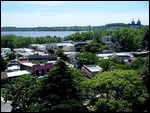

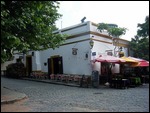
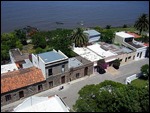
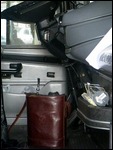
2025-05-22